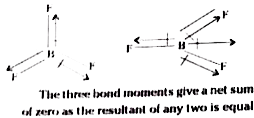Text Solution
Verified by Experts
|
Topper's Solved these Questions
CHEMICAL BONDING AND MOLECULAR STRUCTURE
VGS PUBLICATION-BRILLIANT|Exercise LONG ANSWER QUESTIONS|9 VideosView PlaylistCHEMICAL BONDING AND MOLECULAR STRUCTURE
VGS PUBLICATION-BRILLIANT|Exercise LONG ANSWER QUESTIONS|9 VideosView PlaylistATOMIC STRUCTURE
VGS PUBLICATION-BRILLIANT|Exercise ADDITIONAL QUESTIONS & ANSWERS|22 VideosView PlaylistCHEMICAL EQUILIBRIUM AND ACIDS-BASES
VGS PUBLICATION-BRILLIANT|Exercise ADDITIONAL QUESTIONS & ANSWERS|8 VideosView Playlist
Similar Questions
Explore conceptually related problems
Knowledge Check
Similar Questions
Explore conceptually related problems
VGS PUBLICATION-BRILLIANT-CHEMICAL BONDING AND MOLECULAR STRUCTURE-SHORT ANSWER QUESTIONS
- Show how a double and triple bond are formed between carbon atoms in ...
05:47
|
Play - Show how a double and triple bond are formed between carbon atoms in ...
05:47
|
Play - Explain hybridisation of phosphorous in the formation of PCl(5)
04:26
|
Play - Explain the hybridisation involved is SF(6).
04:35
|
Play - Explain the formation of Coordinate Covalent bond with one example.
03:07
|
Play - Which hybrid orbitals are used by Carbon atoms in the following molecu...
00:36
|
Play - Which hybrid orbitals are used by Carbon atoms in the following molecu...
00:50
|
Play - Which hybrid orbitals are used by Carbon atoms in the following molecu...
00:48
|
Play - Which hybrid orbitals are used by Carbon atoms in the following molecu...
01:25
|
Play - Explain different types of hydrogen bonds with examples.
04:02
|
Play - Explain the formation H(2) molecule on the basis of Valence Bond theor...
01:07
|
Play - Using Molecular Orbital Theory explain why the B(2) molecule is parama...
01:44
|
Play - Write the important conditions necessary for linear combination of ato...
02:41
|
Play - What is meant by the term Bond order? Calculate the bond orders in the...
04:15
|
Play - Of BF(3) " and " NF(3), dipolemoment is observed for NF(3) and not for...
02:11
|
Playing Now - Even though both NH(3) " and " NF(3) are pyramidal, NH(3) has a higher...
02:23
|
Play - How do you predict the shapes of the following molecules making use of...
01:42
|
Play - How do you predict the shapes of the following molecules making use of...
01:35
|
Play - How do you predict the shapes of the following molecules making use of...
01:23
|
Play - How do you predict the shapes of the following molecules making use of...
01:22
|
Play

